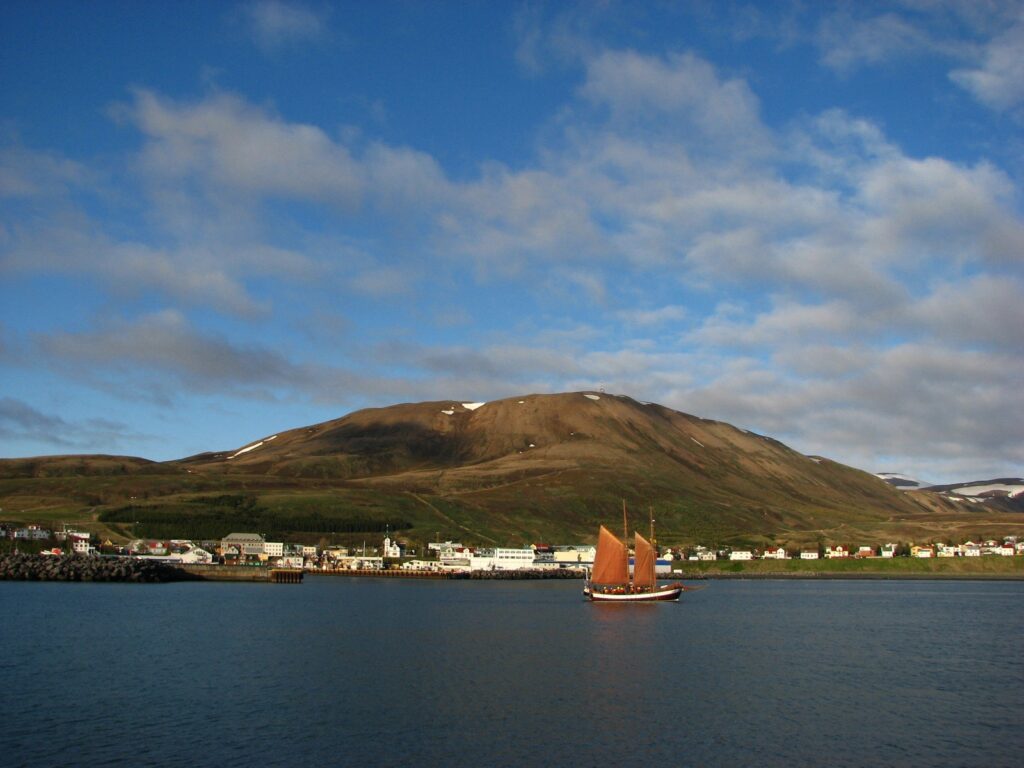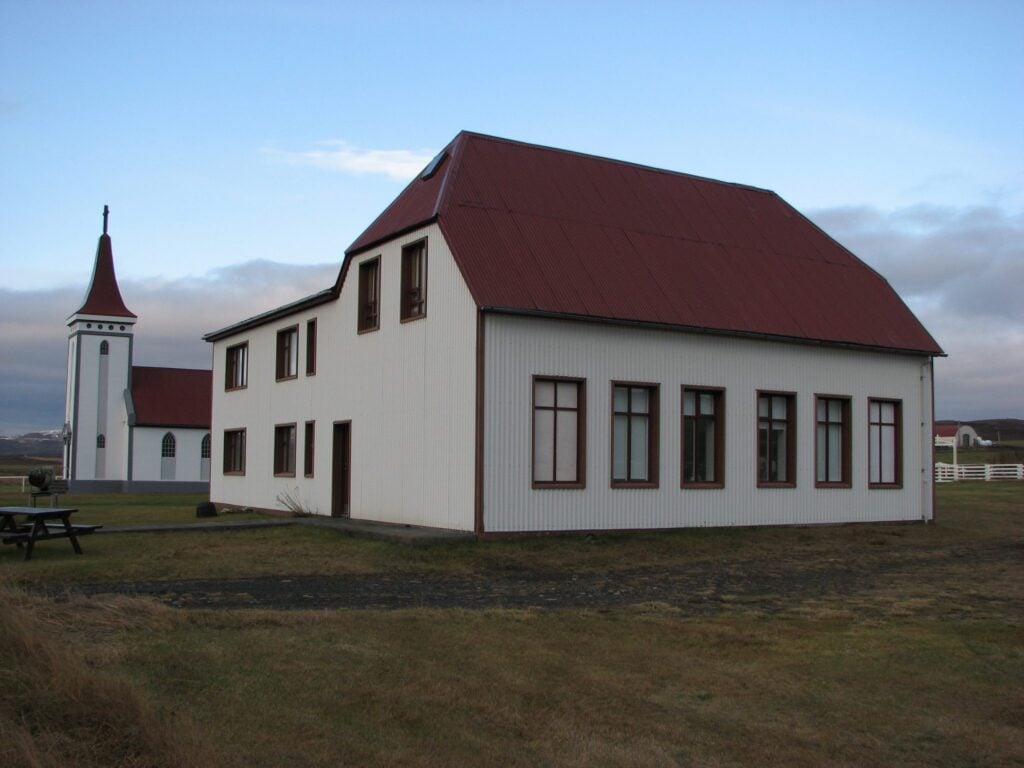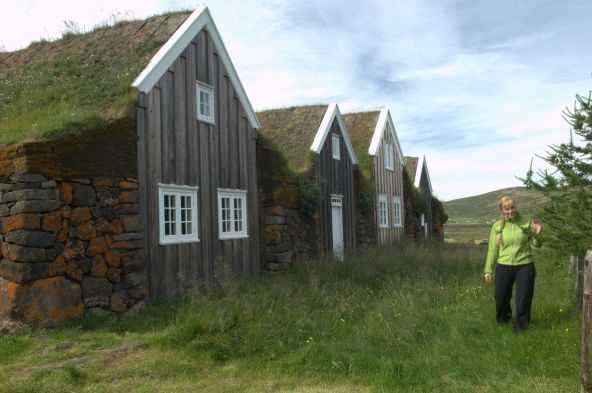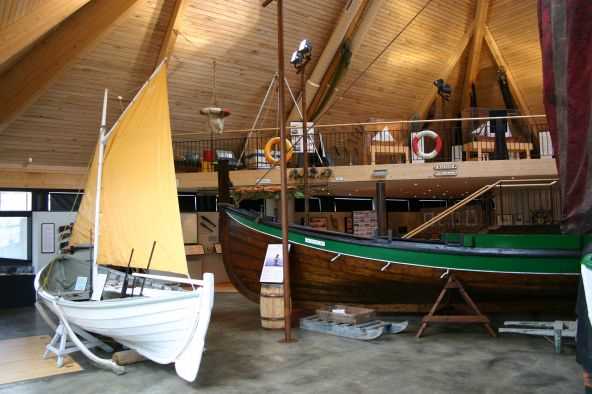A rich heritage is found in Húsavík in North Iceland
Settlement and adoption of Christianity
The Swedish explorer Garðar Svavarsson was the first man to discover that Iceland is an island. He wintered in Húsavík for four years before the settlement of Ingólfur Arnarson. Left behind upon Garðar’s departure was Náttfari whom many consider the first permantent settler of Iceland.

This region fully satisfied the demands made by the settlers with regard to the quality of land and potential for sustenance. The lay of the land made it better suited for average size family farms than for large manors, which were fewer here than elsewhere in North Iceland.
A large number of settlers are identified in Landnáma, the book of settlements and many burial mounds of the first settlers have been found in southern Þingeyjarsýsla.
About the year 963, descendants of the settlers decided to convene their district assembly (Icel: þing) at Þingey island in Skjálfandafljót. This assembly is referred to several times in written sources during the period of approx. 950–1250. Such sources are often sagas relating to local heroes, such as Þorgeir, chieftain of Ljósavatn, who became renowned for his decisive role in the conversion to Christianity in 1000. He is also said to have thrown his images of the old heathen gods into a waterfall in Skjálfandafljót which henceforth was named Goðafoss (Waterfall of the Gods).
Leading the Icelandic renaissance
An eruption of the Askja volcano in the late 19th century, years of springtime sea-ice clinging to the north coast and other difficulties placed a severe burden on the people of Þingeyjarsýsla as on other inhabitants of Iceland. A large number of people emigrated to America and many lost faith in their native country. Yet, in Þingeyjarsýsla, the spiritual culture and resistance of the population showed no weakening and thus it fell to them to assume a leading role in the renaissance that took place in Iceland in the 19th century. This reawakening comprised, among other things, demands for freedom of trade, improved educational opportunities and increased technical efficiency. 
As testimony to those new times, the first Icelandic cooperative society was established at the Þverá farm in Laxárdalur valley in 1882, which became a model for other cooperative societies all over the country. Trade was transferred to the people themselves and independence was on the horizon.
 Museums and exhibitions
Museums and exhibitions
History holds importance for people here and numerous museums provide the present generation with information relating to centuries gone by and their ancestors’ struggle for survival.
The Þingeyjarsýsla District Museum has exhibitions in three locations; The Museum House in Húsavík, Grenjaðarstaður in Aðaldalur valley and Snartarstaðir by Kópasker.
 Folk Museums can also be found at Mánárbakki on Tjörnes point and at Sauðaneshús on Langanes peninsula.
Folk Museums can also be found at Mánárbakki on Tjörnes point and at Sauðaneshús on Langanes peninsula.
Among specialised museums in the region are the Transportation Museum at Ystafell, Sigurgeir’s Bird Collection by Mývatn, the Whale Museum in Húsavík, the District Archives, the Natural History Collection, the Maritime Museum and the Photograph and Film archives in the Museum House in Húsavík.
In addition there are several interesting exhibitions, such as Gljúfrastofa by Ásbyrgi, the summer exhibition in Gallerý Yst Bragginn nearby Kópasker, Laxárstöð in Aðaldalur, Kiðagil in Bárðardalur and the Earthquake Centre in Kópasker.



